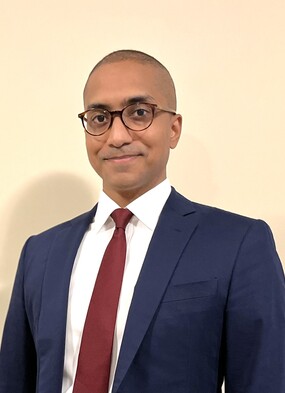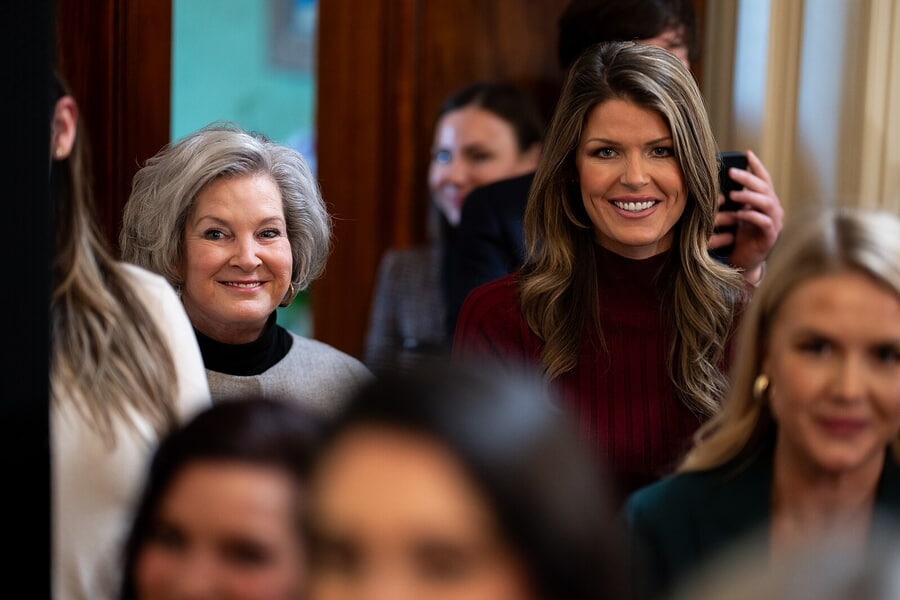Threading the Needle in United States v. Mackey
Section 241 can be applied in a manner that resolves the First Amendment concerns raised by Mackey and the government while allowing the law to achieve its intended purposes.

Published by The Lawfare Institute
in Cooperation With

Today, the U.S. Court of Appeals for the Second Circuit will hear United States v. Mackey, the appeal of a man convicted under the Enforcement Act of 1870 for spreading lies during the 2016 election about how to vote, in hopes of preventing supporters of then-presidential candidate Hillary Clinton from casting a valid ballot. The case raises questions about how we should understand a vitally important Reconstruction-era law, how it applies to protect the right to vote in 2024, and the extent to which the First Amendment protects false speech meant to disenfranchise voters. This case could well have significant implications about the availability of this federal criminal law to deter intentional election disinformation seeking to disenfranchise voters this fall.
An amicus brief filed by Professor Richard Hasen, and the authors’ organizations, Protect Democracy and the Yale Media Freedom and Information Access Clinic, explains that Section 241 can be applied in a manner that resolves the First Amendment concerns raised by the government’s and Mackey’s positions while allowing the law to achieve its intended purposes—ensuring Section 241 remains a robust tool for, among other things, protecting the right to vote.
What Did Mackey Do?
In the run-up to the 2016 presidential election, defendant Douglass Mackey posted memes on social media with intentionally false messages, such as: “Save Time Avoid The Line, Vote from home. Text ‘Hillary’ to 59925 and we’ll make history together this November 8th.” As the government alleged in 2021 and the jury found in 2023, these messages were part of a conspiracy between Mackey and others to mislead voters—specifically Clinton supporters—into believing that they could vote in the 2016 presidential election by text.
Mackey was an influential Twitter user. He and his co-conspirators, who also had prominent social media presences, directed their misleading messages to Clinton supporters—Black and Hispanic supporters in particular. The false messages mimicked the look of legitimate campaign materials, even claiming that the materials were created by the Clinton campaign.
Mackey hoped that Clinton voters would see the messages and submit votes by text that wouldn’t count. As the government showed, Mackey was particularly interested in limiting Black voter turnout in the 2016 election, including suggesting that they “seed ... black social media spaces” with memes encouraging them not to vote. Thousands of people did in fact try to vote by texting the number listed in these false messages. Those attempts to vote were ineffective.
Mackey was arrested in 2021. The government charged him with violating 18 U.S.C. § 241—the codification of part of the 1870 Enforcement Act—for conspiring to injure persons in the exercise of rights protected by the Constitution or laws of the United States. A jury found him guilty in March 2023, and Mackey was sentenced to seven months in prison.
His appeal of that conviction is now before the Second Circuit. It presents the questions of whether Section 241 criminalizes intentionally false statements about when, where, and how to vote; whether such a prohibition is consistent with the First Amendment; and whether Mackey had fair notice that his conduct was criminal. As the country enters another election season, the court’s decision will likely have far-reaching consequences.
The Government’s Argument
Section 241 prohibits conspiracies to “injure, oppress, threaten, or intimidate any person ... in the free exercise or enjoyment of any right or privilege secured to him by the Constitution or laws of the United States.” Section 241 has two major components: the harms prohibited and the rights protected. The primary dispute in this case is what it means to “injure” a person in the context of Section 241 and whether Mackey’s conduct falls under that definition.
The government says that Mackey’s conduct does. Under the government’s interpretation of Section 241, the prohibition on conspiracies to “injure” includes fraudulent or deceptive conduct intended to interfere with, frustrate, or prevent the right to vote—a prohibition that was violated when Mackey and his co-conspirators used deception to defraud qualified voters of their right to have their votes counted.
The government also argues that there is no First Amendment right to circulate false speech about voting requirements and procedures intended to mislead voters. Per the government, any such speech falls entirely outside the protections of the First Amendment because it is integral to a course of criminal conduct, which is not entitled to First Amendment protection. The government also invokes the Supreme Court’s decision in Minnesota Voters Alliance v. Mansky, which noted that a law may properly “prohibit messages intended to mislead voters about voting requirements and procedures”—exactly what Mackey’s intentionally false messages did. The Lawyers’ Committee for Civil Rights Under Law submitted an amicus brief that expands on the government’s First Amendment arguments and explains why protections against fraudulent vote suppression are necessary to protect the right to vote.
Mackey’s Argument
Mackey argues that he was unfairly prosecuted under a law never intended to address his actions. Central to Mackey’s argument is his attempt to recast his actions as mere political misinformation and nothing more. Mackey’s appeal argues Section 241 has a narrower scope and protects the right to vote against coercive acts only—like the violent intimidation of voters—and ballot-box stuffing, and he supports that narrower approach by arguing that anything broader would require criminalization of all deceptive speech and thus is unconstitutional under the First Amendment. (Mackey also advances a number of other arguments, such that it was not clearly established that Mackey’s conduct violated Section 241 and that Mackey was prosecuted in an improper venue.)
According to Mackey and his amici, including Professor Eugene Volokh, the government’s interpretation of Section 241 dissolves the boundaries of the statute to unleash runaway liability. If Section 241 criminalizes knowingly false statements about the time, place, and manner of an election, says Mackey, then it must also criminalize lies about whether to vote, about which candidate to vote for, and even about advocating and voting for laws creating voter identification requirements or limits on early voting. To criminalize all these actions would chill protected political speech and clearly run afoul of the First Amendment. Thus, he suggests, Congress would need to pass a new, more narrowly targeted law for the government to prosecute him for the disinformation at issue in his case.
Threading the Needle—Achieving Section 241’s Goals Without Violating the First Amendment
As Hasen explains in the amicus brief, Section 241’s prohibition on conspiracies to “injure” covers conspiracies to engage in conduct recognized as tortious at common law, including intentional interference with the right to vote through purposeful lies about the mechanics of voting.
First, we look at the history of the law. Section 241 is the codification of Section 6 of the 1870 Enforcement Act, one of three laws (also known as the Force Acts or Klan Acts) intended to put an end to southern resistance to Reconstruction. The term “injure” appears elsewhere in the Enforcement Acts, specifically Section 2 of the 1871 Enforcement Act’s prohibition on conspiracies to “injure” witnesses in federal court on account of their testimony and voters on account of their “support or advocacy” of a candidate. Section 2 of the 1871 Enforcement Act also provides anyone “injured in his person or property” by a covered conspiracy a cause of action to recover damages occasioned by such injury.
Second, we look at Supreme Court precedent. In Haddle v. Garrison, a unanimous Supreme Court resolved a circuit split over the meaning of “injured” in Section 2 of the 1871 Enforcement Act. The Court, looking to the Second Restatement of Torts, held that a plaintiff is “injured” for purposes of Section 2 of the 1871 Act when they suffer “a compensable injury under tort law.” The Court’s understanding of the term “injured” within the 1871 Act applies equally to the meaning of “injure” in the 1870 Act and Section 241, given the similarity of the language and the fact that the laws are “close analogues.” This understanding of the term “injure” also comports with its meaning at the time of enactment, when contemporary legal dictionaries defined injury as a “wrong or tort.” Thus, our brief suggests that Mackey’s approach is legally erroneous because it improperly gives terms in Section 241—a broad, landmark civil rights statute—a meaning “narrower than the common law definition of the term” at the time of enactment.
Third, we show that intentional interference with the right to vote was understood to be a tort, for which a monetary remedy was available, at the time Congress passed the Enforcement Act of 1870. Indeed, while most voting rights litigation these days concerns statutory protections for the right to vote, that was not always the case. Indeed, for over 300 years, from before the Constitution to even the present day, courts have recognized that the intentional denial of the right to vote is a legally cognizable injury that had a remedy in tort law.
If we understand Section 241’s prohibitions to be limited to rights protected by the Constitution and laws of the United States and the elements of the tort, then we prevent the runaway liability that Mackey is wary of. This interpretation hems in Section 241 from multiple sides. First, tort law sets out a long-recognized and well-understood set of injuries that have been defined by centuries of case law. Second, this tort must additionally violate a constitutional or federal right. So, for example, the simple tort of punching someone would not be enough to rise to a Section 241 crime—but punching someone to prevent them from voting would. And this interpretation of Section 241 would avoid any difficult First Amendment quandaries about prohibiting false speech: By linking Section 241 to tort law injuries, those injuries would always be the type that the Supreme Court has blessed regulating.
* * *
Election lies have eroded the foundation of our democracy. With disparities in voter turnout deepening along racial lines and threats to the certification of election results growing, there is an urgent need to deploy existing tools to combat intentional election lies. Section 241 is one such tool. Bad actors who knowingly spread falsehoods about the mechanics of voting with intent to deprive people of their foundational right to vote should not be insulated from liability. In Mackey, the Second Circuit has the opportunity to recognize that. Affirming Section 241’s full breadth may help stem the tide of lies that continue to diminish confidence in the integrity of our elections.
There are several ways that the court could resolve this case. Our greatest hope is that the court chooses a path that offers clarity—or at least avoids sowing more confusion. The court may choose not to answer the statutory question about Section 241 at all and instead determine the case on another issue like venue. If the court finds that Mackey did not have clear notice that his actions were criminal, then it should announce that going forward purposeful lies about when, where, or how to vote that are intended to deprive people of their right to vote can be criminalized under Section 241. What the court should not do is hold that Mackey lacked notice and say no more. Doing so could leave open questions about the coverage of a key civil rights statute during a crucial election year and leave it unclear as to whether a congressional or state statutory fix is needed.





